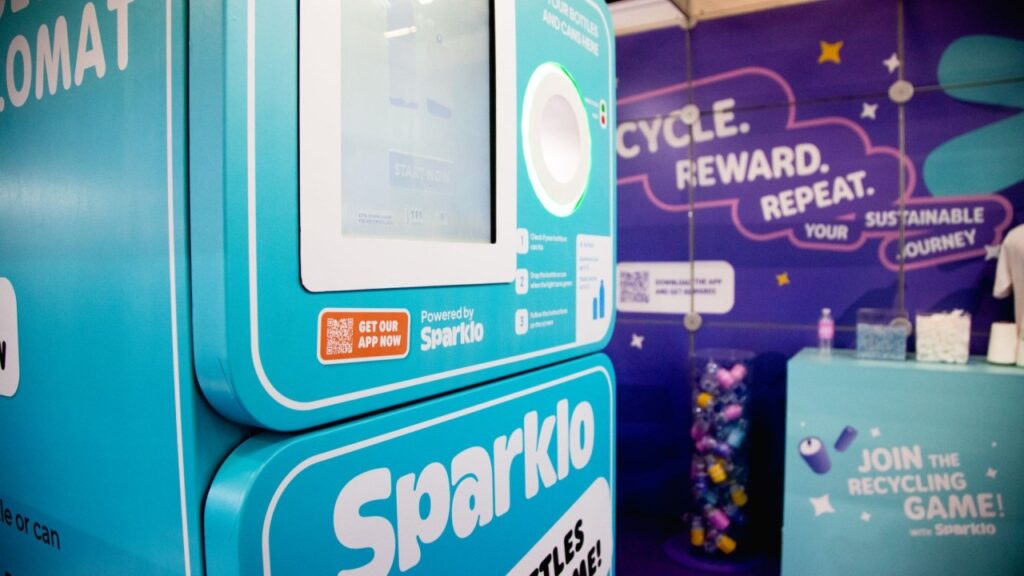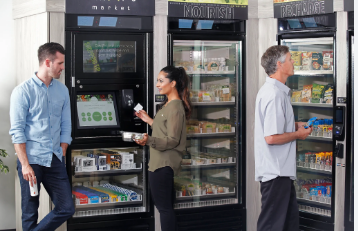Urban living has always been shaped by innovation, from the rise of skyscrapers to the digitalization of daily life. In recent years, automated retail has emerged as a game-changer, transforming the way city dwellers shop, dine, and interact with commerce. With the rise of AI-powered vending machines, cashierless stores, robotic delivery systems, and smart kiosks, urban spaces are evolving to become more efficient, accessible, and technology-driven.
This article explores how automated retail is redefining urban lifestyles, the technological advancements behind it, and the potential impact on society, jobs, and city infrastructure.
The Evolution of Automated Retail in Cities
Automated retail has moved beyond traditional vending machines and self-checkout stations. Today’s advancements in AI, machine learning, robotics, and IoT (Internet of Things) have paved the way for smarter, more adaptive retail experiences. Let’s look at the key transformations:
1. Cashierless Stores and Smart Checkout Systems
Brands like Amazon Go, Zippin, and AiFi have pioneered cashierless shopping experiences where customers can enter a store, pick up items, and leave without standing in line. These stores use computer vision, weight sensors, and AI-powered analytics to detect purchases and charge customers automatically.
How It Works:
Shoppers enter the store using an app or facial recognition.
AI cameras track selected items and update a virtual cart.
Upon exit, the system automatically charges the customer’s account.
Urban Impact:
Reduces wait times and long checkout lines.
Increases convenience for busy city dwellers.
Minimizes human errors in billing and transactions.
2. AI-Powered Vending Machines: Beyond Snacks and Beverages
Vending machines are no longer just for sodas and chips. Today, they offer hot meals, fresh produce, electronics, and even prescription medicine. In cities like Tokyo, Shanghai, and New York, high-tech vending machines are revolutionizing how urban residents shop on the go.
Emerging Trends:
Facial recognition payments for seamless transactions.
Personalized AI recommendations based on purchase history.
Robotic arms that assemble custom meals or fresh coffee.
Urban Impact:
Expands access to fresh food in underserved areas.
Operates 24/7, meeting the needs of night-shift workers and travelers.
Reduces overhead costs for businesses, allowing lower consumer prices.
3. Robotic Delivery Systems and Automated Micro-Fulfillment Centers
The demand for same-day delivery and instant access to products has led to the rise of robotic couriers and drone deliveries in urban centers. Companies like Starship Technologies, Nuro, and Wing are deploying autonomous delivery bots for groceries, takeout meals, and retail orders.
Key Technologies Used:
Lidar sensors and GPS mapping for navigation.
AI algorithms to predict demand and optimize delivery routes.
Secure compartments that open via mobile apps.
Urban Impact:
Reduces traffic congestion by minimizing delivery vehicles.
Lowers carbon footprint with electric-powered bots.
Enhances accessibility for seniors and disabled individuals.

4. Smart Kiosks and Interactive Shopping Hubs
Automated kiosks are replacing traditional convenience stores, providing a compact, self-service experience with minimal human interaction. These AI-powered hubs offer beauty products, electronics, travel essentials, and gourmet meals on demand.
Unique Features:
Touchless interfaces that allow gesture or voice commands.
Personalized product suggestions using machine learning.
Integration with digital wallets and cryptocurrency payments.
Urban Impact:
Saves space in crowded cityscapes.
Provides instant access to necessities without staffing requirements.
Supports contactless transactions, promoting hygiene and safety.
The Economic and Social Impact of Automated Retail
While automated retail introduces convenience and efficiency, it also comes with challenges and opportunities for cities worldwide.
1. Job Market Transformation
Automation is replacing some retail jobs, but it is also creating new opportunities in AI development, cybersecurity, and system maintenance. Instead of eliminating employment, cities must adapt by upskilling workers for the digital economy.
Key Changes:
Reduction in cashier and retail assistant roles.
Growth in tech-related jobs, such as AI system managers and robotic maintenance experts.
Rise in gig economy jobs related to last-mile delivery and logistics.
2. Urban Infrastructure and Smart City Planning
Automated retail fits seamlessly into smart city initiatives, integrating with existing urban infrastructure to improve efficiency and sustainability.
Possible Developments:
Micro-retail hubs in subways and transport stations for commuters.
Eco-friendly solar-powered vending machines in public spaces.
Autonomous grocery stores in high-rise buildings for quick access to fresh produce.
3. Sustainability and Reduced Waste
With smart inventory management and predictive AI, automated retail minimizes waste and promotes sustainable shopping habits.
Sustainable Features:
AI-driven stock optimization to reduce food wastage.
Eco-friendly packaging options in vending machines.
Blockchain transparency for tracking product sourcing and ethical practices.
Challenges and Ethical Considerations
Despite its advantages, automated retail presents some ethical and logistical challenges.
1. Privacy and Data Security
AI-powered facial recognition raises concerns about data privacy.
Consumer behavior tracking may lead to targeted ads and manipulation.
Hacking risks could compromise financial transactions.
2. Accessibility for Low-Income and Elderly Populations
Not all urban residents have access to smartphones or digital payment systems.
Elderly individuals may struggle with touchless technology and AI interfaces.
Smart city planners must ensure inclusive retail solutions.
3. Dependency on Technology and Cyber Threats
A major system outage could disrupt automated retail operations. AI bias may lead to unfair pricing or exclusion of certain demographics.Strong cybersecurity protocols are needed to prevent hacking and fraud.

The Future of Automated Retail in Urban Living
As technology advances, automated retail will become more sophisticated, offering even greater convenience and customization. Here are some future predictions:
Hyper-Personalized Shopping Experiences
- AI-powered vending machines will scan biometric data (like stress levels) to recommend snacks or beverages.
- Augmented reality (AR) will allow virtual try-ons for clothing and accessories before purchase.
AI-Powered Sustainability Initiatives
- Automated refill stations for zero-waste shopping.
- AI-based inventory tracking to minimize surplus and spoilage.
Full-Scale Autonomous Malls
- Entire shopping centers run by AI and robotics, offering cashierless transactions, drone-assisted deliveries, and interactive digital displays.
- Seamless integration with smart homes, allowing remote purchases and automated deliveries.
Conclusion
Automated retail is not just a technological innovation; it is a catalyst for urban transformation. As cities embrace AI-powered shopping, vending, and delivery, they become more efficient, sustainable, and interconnected. While challenges remain, thoughtful planning and inclusive policies can ensure that automated retail enhances urban life for all residents.
As we step into a future where self-service kiosks, robotic deliveries, and AI-driven stores become the norm, one thing is certain: automated retail is here to stay, and it’s redefining urban living in ways we never imagined. Read More>>>
1 thought on “How Automated Retail Is Redefining Urban Living”